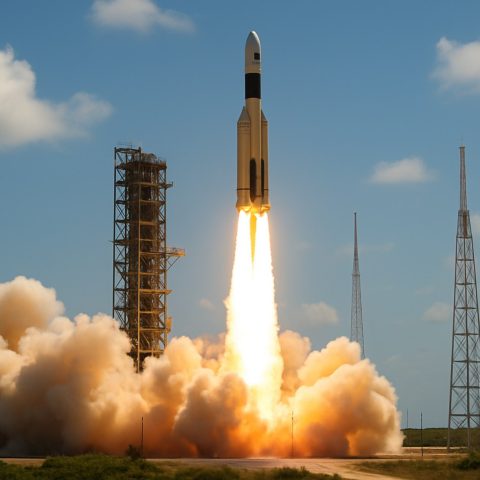- Artificial intelligence is revolutionizing underwater infrastructure by enhancing the monitoring and protection of undersea cables and pipelines.
- AI-powered drones, sensors, satellites, and vessels collaboratively provide detailed insights into oceanic conditions.
- Full autonomy in undersea networks faces challenges, including AI’s difficulty in recognizing unfamiliar threats, requiring advances in machine learning.
- Debates arise over relaxing European regulations to spur AI innovation, with industry leaders advocating for balanced oversight.
- The integration of AI in ocean exploration exemplifies its vast potential to align technological advancements with global infrastructure needs.
Artificial intelligence is not only conquering the skies and reshaping terrestrial landscapes; it is now diving deep into the ocean’s enigmatic depths, transforming how we perceive—and protect—our underwater infrastructure. Picture a world where AI operates beneath the waves, safeguarding the vast networks of cables and pipelines that power our modern lives—a world being crafted by firms like North.io.
In this digital renaissance, the briny deep is not just a realm of mystery but a domain for AI-powered guardians. These advanced systems fuel an unprecedented transparency in monitoring undersea technology, ensuring the uninterrupted flow of data and energy across the globe. With underwater drones and sensors working tirelessly alongside satellites and surface vessels, the paradigm shifts. Expert systems flicker into action, analyzing data from various platforms, piecing together a comprehensive picture of the watery world below.
However, the journey to a fully autonomous undersea network is fraught with challenges. Current AI-driven seabed caretakers often struggle to recognize threats that lie outside known parameters, necessitating leaps in machine learning to deliver a truly intelligent mapping solution. Yet, the ongoing commitment to refining these technologies underscores AI’s pivotal role in shaping the future.
This transformative wave isn’t without its detractors. Calls grow to relax stringent European regulations, unleashing AI’s potential for innovation. Industry leaders argue for a balance between oversight and freedom, fostering a fertile ground where groundbreaking advancements can thrive.
The movement beneath the waves serves as a testament to AI’s limitless potential, signaling a horizon where revolutionary technology aligns with earthly needs, guiding both tech companies and policymakers alike through uncharted waters.
AI’s Dive into Ocean Depths: How It Revolutionizes Underwater Infrastructure
Introduction
Artificial intelligence is not just taking over skies and urban landscapes; it’s now exploring the enigmatic ocean depths, reshaping how we monitor and maintain our underwater infrastructure. Companies like North.io are pioneering this marine revolution, developing AI systems to safeguard the critical cables and pipelines powering our digital and energy-driven lives.
How AI is Transforming Underwater Infrastructure
How-To Steps & Life Hacks
1. Deployment of Underwater Drones: These drones can perform routine inspection of subaqueous infrastructures. They are equipped with high-resolution cameras and sonar for visual and acoustic imaging.
2. Integration of AI with Sensor Networks: Data is gathered from various sensors, processed, and analyzed by AI algorithms to detect patterns or anomalies, predicting issues before they arise.
3. Satellite and Surface Vessel Coordination: Combine multiple data sources to enhance mapping and monitoring capabilities.
Real-World Use Cases
– Cable Monitoring: AI systems monitor undersea cables to prevent disruptions in internet and communication services.
– Pipeline Inspection: Routine checks for structural integrity and leak detection are conducted by AI-driven subsurface vehicles.
– Marine Conservation: Protecting marine ecosystems by monitoring environmental changes and illegal fishing activities.
Market Forecasts & Industry Trends
The market for AI-driven underwater technology is expected to see rapid growth, with a focus on digital twins and remote monitoring systems for proactive maintenance. According to a report by Research and Markets, the global underwater robotics market is anticipated to grow at a CAGR of over 13% by 2026, as AI becomes more capable and cost-effective.
Innovations and Challenges
Features, Specs & Pricing
– AI Models: Incorporate deep learning techniques for pattern recognition and anomaly detection.
– Costs: Initial investment can be high, but predictive maintenance leads to long-term savings.
– Specifications: High durability and the ability to function in extreme conditions are necessary.
Security & Sustainability
– Enhanced Security: Reduced human intervention leads to less vulnerability.
– Sustainability: AI platforms aid in efficient resource management and environmental protection.
Controversies & Limitations
– Regulatory Hurdles: Strict regulations, especially in Europe, are seen as hurdles to rapid AI deployment.
– Technological Limitations: Current systems may lack the ability to recognize new or novel threats beyond their programmed parameters.
Pros & Cons Overview
Pros:
– Real-time data and insights.
– Reduced human risk due to deep-sea conditions.
– Improved maintenance and prevention strategies.
Cons:
– High setup and operational costs.
– Dependence on AI accuracy, which is still being refined.
– Regulatory complications in various regions.
Insights & Predictions
Predictably, AI will progressively play a significant role in marine conservation, energy resource management, and maritime security. As technologies evolve, they may soon move toward achieving a self-regulating oceanic network.
Actionable Recommendations
– Stakeholder Collaboration: Policymakers should work with tech firms to strike a balance between innovation and regulation.
– Investment in R&D: Funding cutting-edge research will lead to sophisticated AI tools, enhancing undersea infrastructure monitoring.
– Public Awareness: Informing the public about AI benefits could lead to broader acceptance and support.
Conclusion
AI’s potential beneath the waves opens a new frontier in technology, offering promising solutions for monitoring and conserving our critical underwater infrastructure. With continued innovation, collaboration, and regulation, AI can usher in a safer, more efficient, and sustainable marine environment.










